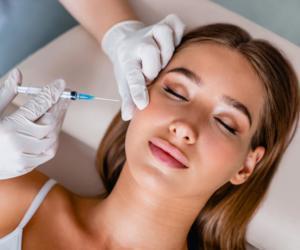Breast cancer can recur at any time, mostly in the first three to five years after initial treatment and it can come back as a local recurrence (in the treated breast or near the mastectomy scar) or as a distant recurrence somewhere else in the body (lymph nodes, the bones, liver, or lungs).
The patient should continue to practice breast self-examination, checking both the treated area and another breast each month if have been treated for breast cancer.
The patient must report any changes to the doctor right away, for example:
- An area that is distinctly different from any other area on either breast
- Lump or thickening in or near the breast or in the underarm that persists through the menstrual cycle
- A change in the size, shape, or contour of the breast
- A mass or lump, which may feel as small as a pea
- A marble-like area under the skin
- A change in the feel or appearance of the skin on the breast or nipple, including skin that is dimpled, puckered, scaly, or inflamed (red, warm or swollen)
- Bloody or clear fluid discharge from the nipples
- Redness of the skin on the breast or nipple
Also in addition to performing monthly breast self-exams, the patient must keep scheduled follow-up appointments with the health care provider.
Factors which determined the likelihood of a recurrence are:
- lymph node involvement
- the size of a tumor (larger tumor – the greater the chance of recurrence)
- hormone receptors (2/3 of all breast cancers contain significant levels of estrogen receptors, which means the tumors are estrogen receptor positive (ER+) and they tend to grow less aggressively and may respond favorably to treatment with hormones.)
- histologic grade (refers to how much the tumor cells resemble normal cells when viewed under the microscope from 1 to 4, the higher the histologic grade, the greater chance of recurrence)
- nuclear grade (the rate at which cancer cells in the tumor divide to form more cells, higher nuclear grade – more aggressiveness)
- oncogene expression (a gene that causes or promotes cancerous changes within the cell, tumors that contain certain oncogene may increase a patient's chance of recurrence)
The type of treatment for local breast cancer recurrences depends on patient's initial treatment – if patient had a lumpectomy, local recurrence is usually treated with mastectomy, because radiation therapy cannot be delivered twice to the same area; if the initial treatment was mastectomy, recurrence near the mastectomy site is treated by removing the tumor whenever possible, usually followed by radiation therapy.
In either case, hormone therapy and/or chemotherapy may be used after surgery and/or radiation therapy. If breast cancer is found in the other breast, it may be a new tumor unrelated to the first breast cancer so treatment would include a lumpectomy or mastectomy and possibly systemic therapy (chemotherapy and/or hormonal therapy).
Women with distant recurrence involving organs such as the bones, lungs, brain, or other organs are treated with systemic therapy. Radiation therapy or surgery are also recommended to relieve certain symptoms.
For women whose cancer cells have high levels of the HER2/neu protein, immunotherapy with trastuzumab (Herceptin) alone or with chemotherapy may be recommended.






